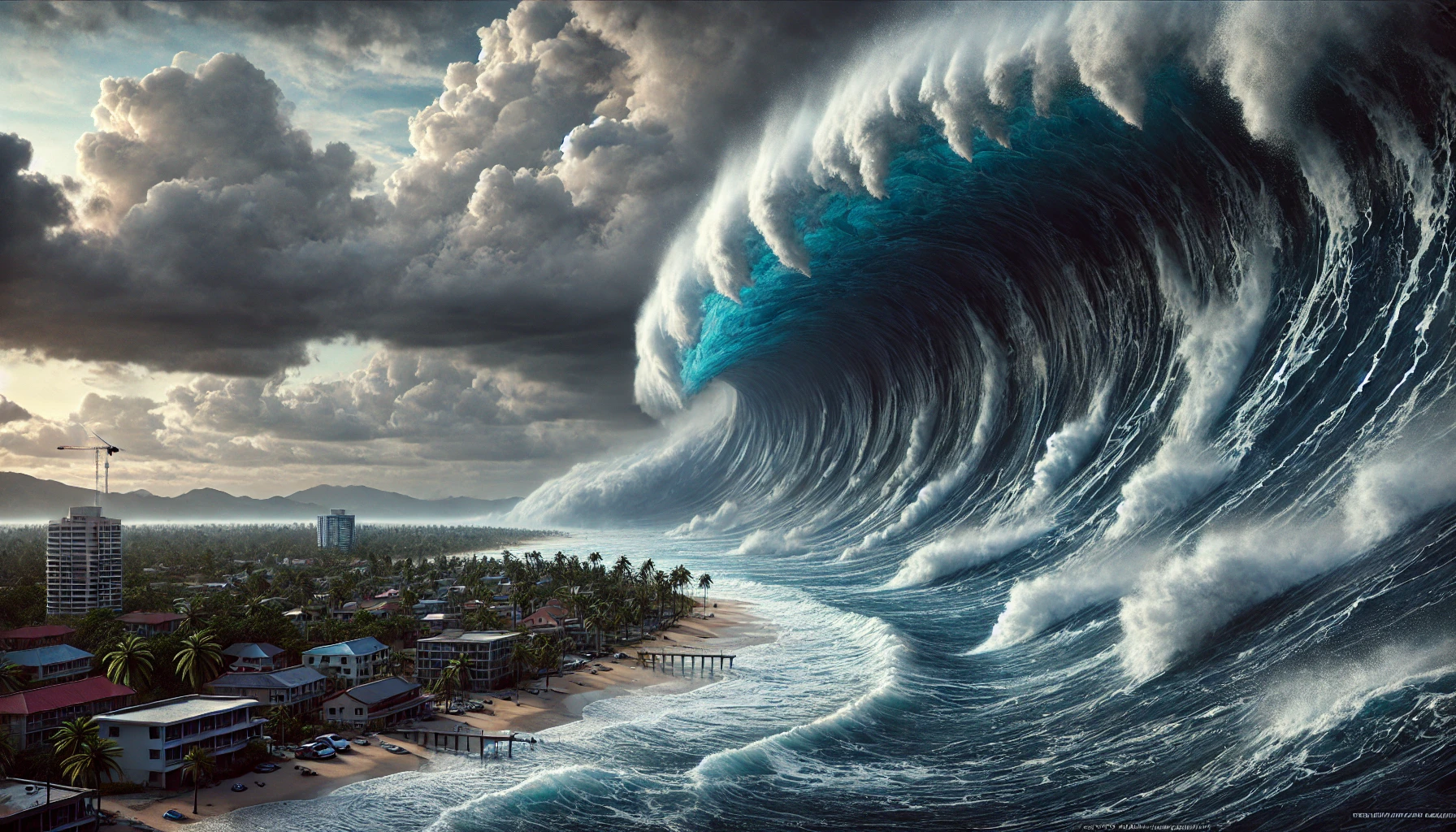Tsunamis are among the most powerful and destructive natural disasters, capable of causing widespread devastation along coastlines. These massive waves are often triggered by underwater earthquakes, but what exactly causes them to form, and why are they so powerful? Let’s dive into the science behind tsunamis and understand how tectonic forces beneath the ocean’s surface lead to these gigantic waves.
What is a Tsunami?
A tsunami is a series of large, powerful ocean waves usually caused by seismic activity beneath the ocean floor. Unlike regular waves generated by wind, tsunamis are initiated by shifts in the earth’s crust, which displace vast amounts of water. Tsunamis can travel across entire oceans at high speeds, and they often increase in height as they approach shallow coastal areas, resulting in destructive and dangerous waves.
How Underwater Earthquakes Trigger Tsunamis
- Subduction Zones
The most common cause of tsunamis is an earthquake along a subduction zone—where one tectonic plate is forced beneath another. When tectonic plates collide, immense pressure builds up until it releases in the form of an earthquake. - Seafloor Displacement
During an underwater earthquake, part of the ocean floor can be displaced suddenly, moving up or down. This vertical shift displaces the water above it, creating a wave that radiates outwards in all directions. - Wave Formation and Propagation
Once the water is displaced, the wave begins to travel across the ocean. In deep waters, a tsunami wave might be only a few feet high, making it almost unnoticeable. However, as it reaches shallow coastal areas, it slows down and increases in height, forming a massive wall of water that can crash into the shore with devastating force.
Other Causes of Tsunamis
While underwater earthquakes are the primary cause of tsunamis, other events can also trigger them, including:
- Underwater Landslides: The collapse of land masses underwater can displace water and create waves.
- Volcanic Eruptions: Volcanic activity near or under the ocean can displace water, leading to tsunamis.
- Meteor Impacts: Although rare, a large meteor impact in the ocean could produce massive tsunamis.
Warning Signs and Detection
- Seismic Activity Monitoring
Seismographs can detect underwater earthquakes, providing an early indication that a tsunami might form. If the earthquake occurs in a tsunami-prone area, alerts can be issued. - Tsunami Warning Centers
Organizations like the Pacific Tsunami Warning Center monitor for potential tsunami activity and issue warnings to affected regions. - Natural Signs
Often, a rapid and unexpected retreat of water from the shoreline can signal that a tsunami wave is approaching. Recognizing these signs can be crucial for survival.
Tsunami Impact on Coastal Areas
When a tsunami reaches the shore, its impact can be catastrophic. The force of the water can destroy buildings, uproot trees, and flood large areas, leading to significant loss of life and property. Tsunamis also disrupt ecosystems, as the force of the water can damage coral reefs, beaches, and marine life habitats.
Conclusion
Tsunamis remind us of the immense power of Earth’s natural forces. Triggered by underwater earthquakes and other seismic events, these waves carry energy across oceans, often causing destruction along coastlines. Understanding the causes and warning signs of tsunamis can help communities better prepare and respond to these formidable natural disasters.

